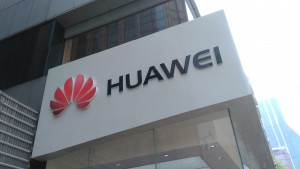SMARTPHONES: Huawei Snagged in Global Smartphone Slowdown
Bottom line: New data shows Huawei’s smartphone sales growth slowed sharply in the second quarter, and the company will be lucky to log 20 percent annual growth due to saturation in its home China market.

The first of many reports for second-quarter smartphone sales has just come out, revealing one of the first declines in more than a year for the surging Huawei. At the same time, the new data from TrendForce show that surging Chinese brands Oppo and Vivo are also seeing rapid slowdowns in their recent breakneck growth. The bigger picture is that the global smartphone market is slowing sharply or even contracting after years of rapid growth, with global leaders Apple (Nasdaq: AAPL) and Samsung (Seoul: 005930) also suffering big drops this year.
Some might argue that the 26 percent shipment growth posted by Huawei in this year’s second quarter looks relatively solid, and indeed it far outpaces an overall rise of 3.2 percent in global smartphone sales for the period, according to TrendForce. But the figure is well below Huawei’s previous growth rates that were typically much higher, including 58 percent growth in this year’s first quarter, according to IDC.
Before we go any further, let’s review some of the latest actual data from TrendForce, whose figures will be followed in the next 2 weeks by similar ones from other data tracking firms like IDC and Gartner. Global smartphone sales totaled 315 million for the quarter, up 3.2 percent from a year ago and an 8.9 percent rise from the first quarter. (company announcement; Chinese article)
Among the big global brands, Apple increased its share to 15.1 percent from 14.5 percent in the first quarter, though the figure was still down from its share of 16.4 percent a year earlier. Samsung’s share fell to 24.5 percent from 28 percent in the first quarter, but the latest figure also showed the company’s share is stabilizing at about the 25 percent level.
Market Share Slips
Huawei cemented its place as the world’s third largest brand during the quarter. But like the other global leaders, it also showed a rare decline in market share on a quarter-to-quarter basis, dropping to 9.2 percent in the second quarter from 9.3 percent in the first. Its second quarter shipments of 29 million smartphones would bring its total for the first half of the year to about 56 million smartphones.
That number would put the company easily on track to beat its record sales of just over 100 million smartphones last year. But the problem is that the first-half figure, if we double it, would translate to just 12 percent sales growth for Huawei in 2016. That’s far less than the 50-60 percent growth it previously logged. But the data is consistent with signs that began to appear last month saying the company was sharply lowering its sales targets for 2016. (previous post)
Meantime, we should also note that 2 other Chinese smartphone high-flyers, Oppo and Vivo, also appeared to see their breakneck growth stalling in the second quarter. Oppo managed to claim 5.6 percent of the global market in the quarter, up 0.3 percentage points from the first; while Vivo share remained flat at 4.7 percent over the same period.
So, what’s happening here, and what will it mean for the Chinese brands, most notably Huawei? The bigger picture seems to be that China’s smartphone market, the world’s largest, has become highly saturated and none of the brands will see big gains there for the foreseeable future. That’s important because China was largely responsible for the meteoric growth of most of these domestic brands over the last 2 years, and was also a major factor behind Apple’s boom.
All that said, the big factor for all of these companies going forward will be their ability to grow outside China, especially by cultivating emerging markets like the BRICS where penetration rates are typically low. In that regard, Huawei and the struggling Lenovo (HKEx: 992) and ZTE (HKEx: 763; Shenzhen: 000036) might have an advantage, since they already have extensive overseas networks. Others like Xiaomi are learning that building such networks takes time and isn’t easy, and for those reasons could face more difficulty.
Related posts:
- SMARTPHONES: Xiaomi Taps Star Power in Drive to Go Upscale
- SMARTPHONES: More Distress Signals from Huawei, Smartisan
- SMARTPHONES: Coolpad Losses Mount as Sales Plunge
- Today’s top stories
(NOT FOR REPUBLICATION)
